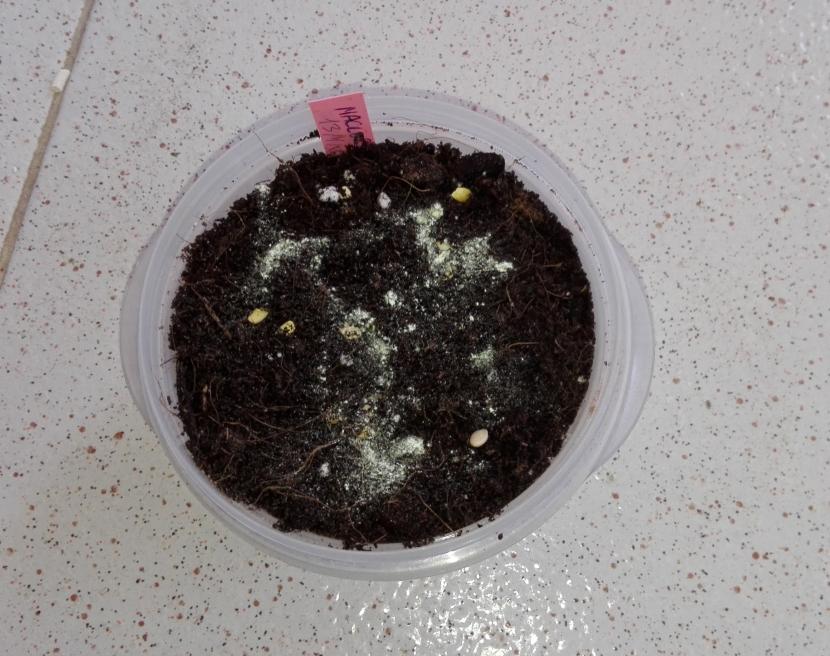
Image - Wikimedia / N yotarou
El Calleryan Pyrus or flowering pear is one of the most resistant ornamental trees there is. In fact, it is more common to be affected by strong gusts of wind or major storms, than by any pest or disease.
Its maintenance is very simple, since it is also quite adaptable and is able to withstand frosts of a certain intensity without suffering any damage. As if that were not enough, it is beautiful practically all year round, even in winter when it runs out of leaves.
Origin and characteristics of Calleryan Pyrus

Known as Callery pear or flowering pear, this is a deciduous tree native to China that can reach a maximum height of 20 meters. Its trunk is straight, and the crown is made up of oval leaves, 4-7cm long, dark-green on the upper surface and light-green on the underside. During the fall they turn yellow or orange before falling.
Blooms in early spring, before the leaves sprout. The flowers are white, have five petals and are 2-3cm in diameter. They emit a sweet aroma that can be cloying to some people. And the fruits are small, less than 1cm in diameter, hard and orange-brown when ripe. These contain small seeds that will be dispersed by the birds through their droppings.
There are different varieties:
- Aristocrat
- Autumn blaze
- Bradford (known as Bradford pear tree)
- Capital
- Cleveland Select
- redspire
- white house
Of all of them, one of the most cultivated is Bradford, since it is the most suitable for narrow areas and even for cities. However, it must be taken into account that its trunk is very fragile, being able to break easily during a storm, intense snow or even by strong winds. For this reason, there are those who opt for Cleveland, which is much more resistant.
What are their cares?

Image - Wikimedia / Alpsdake
If you are thinking of acquiring a copy, we recommend that you provide it with the following care:
Location
It is a plant that must be abroad, in full sun although it can also be in semi-shade. The only thing you must bear in mind is that, if you plant it in the ground, it must be at least 4 meters from tall plants so that it can have an excellent development and so that you can contemplate it in all its splendor as it grows. .
Earth
Undemanding. It adapts to a wide variety of soils, whether acidic or not. So:
- Growing in the garden: avoid having it in poor lands, with poor drainage, otherwise you will have problems growing with health.
- Potted cultivation: it is not a plant to have in a pot - at least, not forever. Even so, during his youthful years it is possible to enjoy it if you have it with a universal substrate (for sale here).
Irrigation
Moderate to frequent. During the warmer months of the year, that is, in spring and especially summer, it will be time to water often. It is necessary to water conscientiously, that is, trying to pour all the necessary water until all the earth is well soaked.
Generally, it will be watered 3-4 times a week during the summer season, and 1-2 weekly the rest of the year.
Subscriber
From early spring to late summer (or early autumn if the weather is mild) it is advisable to fertilize with liquid fertilizers if it is potted, for example with guano (on sale here) following the indications specified on the package, or in powder if it is in the garden, such as cow manure (for sale here) by throwing a layer of about five centimeters all around and then mixing it with the earth.
Both are organic fertilizers, suitable for organic farming.
Multiplication
El Calleryan Pyrus multiplies by seeds in winter, since they need to be cold before germinating. Thus, if you live in an area where frosts are registered regularly during this season of the year, you simply have to sow them in pots with universal substrate of about 20cm in diameter, putting 2-3 in each one, and let nature take its course. (but water if you see that the substrate dries).
By contrast, If you live in an area where the climate is rather warm, to achieve a higher percentage of success it is advisable to stratify them artificially for three months before planting them in a pot. Artificial stratification consists of making a first sowing in a tupperware with vermiculite (for sale here) previously moistened, and then place it with the lid on in the fridge (where dairy products, fruit, etc.). Once a week you have to take it out and open it, so that the air is renewed and prevent fungal infection.

Rusticity
It resists frosts of up to -18ºC, but it does not live in tropical climates. Moreover, in warm temperate climates, with mild autumns and winters, it is normal for its leaves to turn from green to brown (dry) before falling.
Where to buy a flowering pear tree?

Image - Wikimedia / Alpsdake
You will find it for sale in nurseries and garden stores, both physical and online. The price will vary depending on the size, but to give you an idea, a medium-tall specimen, about 3-4 meters, can cost around 150 euros.
What did you think of the Calleryan Pyrus?